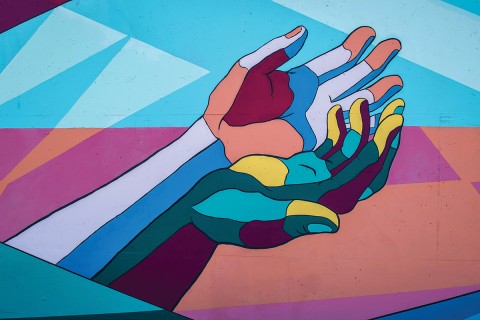Living with chronic pain without asking why
When I’m simply present to my own pain, I learn to be present to others’ pain, too.

Seven years ago I was pregnant with our first child and preparing for an unmedicated birth. I had taken diligent notes from childbirth classes and books and felt ready to go “floppy soggy” and “make friends with the heavy feeling of release.” When labor started, though, my body and mind did things other than I intended. I braced. I held my breath. I couldn’t let go of control of my insides. I told my husband I was worried something would fall out of me, and he replied, “That’s what’s supposed to happen.”
A turning point came when after several days and nights of early labor our midwife suggested Pitocin, a drug that increases the intensity of contractions and speeds labor. Faced with the choice between losing control over my body through medical intervention or losing control by melting into the waves of pain and pressure, something switched in my mind and I finally let go. I stopped resisting the pain. I rode the waves and let a primal, body-based consciousness take over. Our son, all ten and a half pounds of him, was born a couple hours later.
Learning to accept the pain of childbirth was one point in the larger arc of redefining my relationship with pain. Growing up in the evangelical subculture, I learned that pain and suffering were not God’s Plan A. Pain, disease, and death came into the world through Adam and Eve’s original sin, I was taught. Even if individuals did nothing to deserve it, our physical suffering was still a consequence of our collective bad action. It was a reminder that things were not as they should be.




